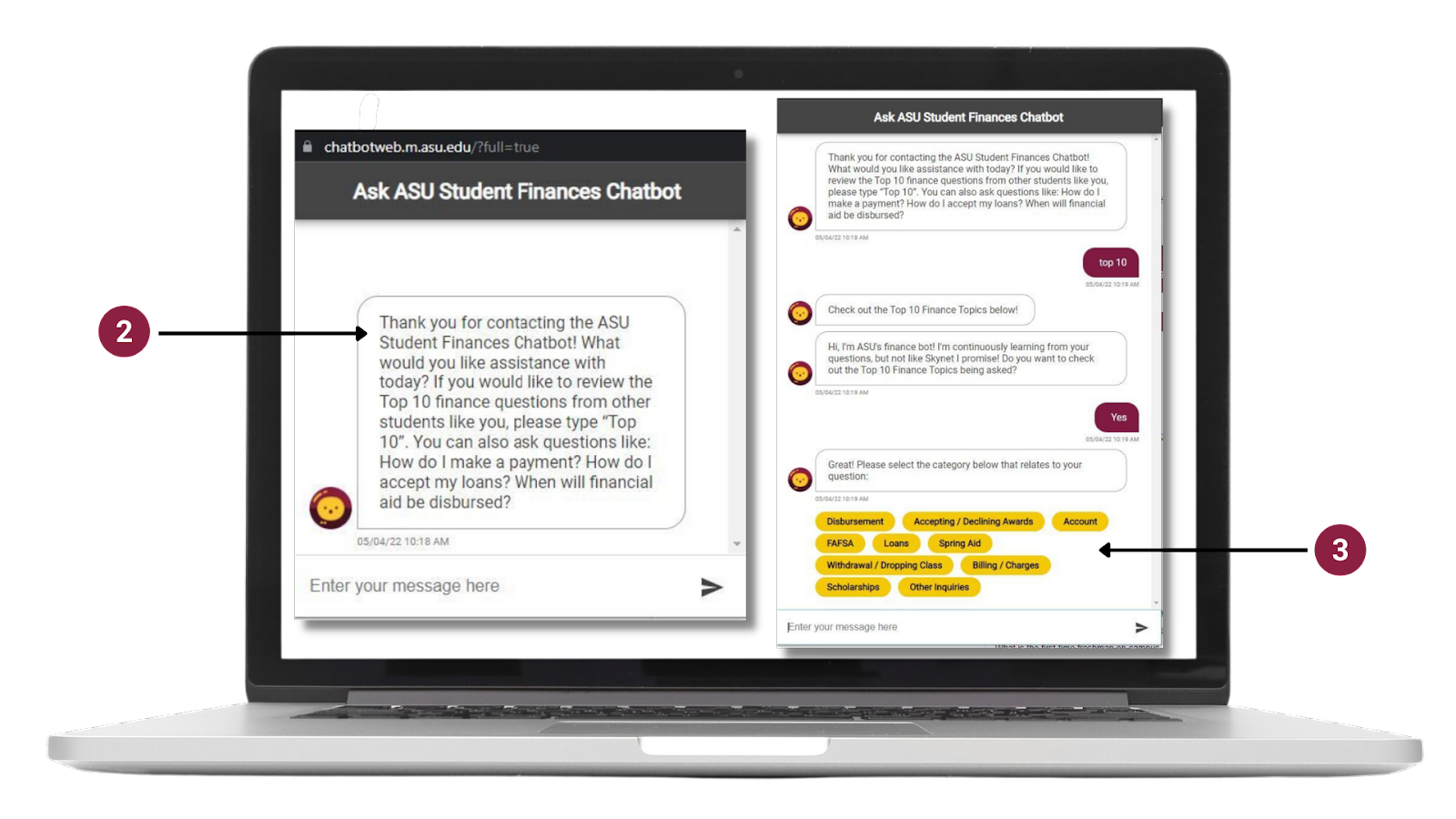
ASU’s Experience Center chatbot supports the Sun Devil community
If ASU services had a “front door,” it would be the Experience Center (EC). Located at the University Center Building in Tempe, this team of over 140 agents and specialists are available 24/7 to help students, faculty and staff from any location navigate the many services the university provides to its community – from IT troubleshooting to parking and transport, password reset, facilities and more.
With more than 800,000 contacts handled in 2021, the EC’s agents are always striving to deliver customer delight, providing high-quality interactions with their users.
As part of the University Technology Office – which innovates the technological processes, models and interactions that connect the ASU-plus community – the EC set out to explore new ways to more quickly and efficiently share information and knowledge.
Enter: the chatbot.
Introducing chatbots as a way to streamline the user experience
A chatbot is an artificial intelligence-driven software that simulates human-like conversations with users via text message on chat. Chances are you’ve already seen these chat features popping up in the corner of various sites and apps that you use everyday. Today, the EC’s chatbot joins those ranks to streamline the customer experience it offers.
The chatbot, which currently assists students with financial questions and will soon expand to other EC services for everyone in the ASU community, isn’t meant to replace the human experience. Instead it's designed to complement interactions with agents and give an even faster response time. If a user needs to escalate their question to an EC agent, that option is available inside the chat feature.

As Gigi Speaks, Director Information Technology Services, put it, “the chatbot is impactful to the user because it can provide simple answers instantly instead of having them wait for an agent to become available.”
Since the chatbot’s soft launch in 2020, the EC team has been hard at work to improve its helpfulness. Originally, it could provide answers to FAQ-type questions. But did you know that chatbots get smarter over time? That’s right! With each encounter, the chatbot is able to build upon interactions to learn and leverage information.
Now, with more information and data added to its “knowledge,” the chatbot has expanded the breadth of topics that it could address.
Here’s how chatbots become smarter over time
When a user types their question into the chatbot, it sources many of its responses from existing web pages. To reply, the chatbot will provide a preview of the first 100 characters of the best-matched resources with a link for the user to explore the full explanation.
This process unites many ASU information sources, like web pages and “Knowledge Base” articles, that were previously disparate.
Another way that the chatbot has become “smarter” is by providing more accurate answers to users’ questions. “The bot showcased this learning by asking ‘are you interested in the top 10 questions,’” said Jason Wiley, EC Operations Manager.
This, combined with the addition of more information and an introduction to how the chatbot works, kept users within that experience. “Originally, we were mimicking the way we thought the user was going to ask the question,” Wiley said. “Now, we have options to guide them to the answer instead of locking them into another track.”
In fall 2021, about 15 percent of users who interacted with the chatbot finished their EC process without the interaction escalating to a human agent. Now that the chatbot has become more intelligent, that number has increased to around 30 percent. “There’s been a learning curve on both sides,” Wiley said. “The chatbot changed the behavior of a caller and of the EC agents, and we asked ourselves, ‘how do we make this a value-add and not make it seem like we’re avoiding people?’”

The text chatbot isn’t the only option for AI-driven solutions at the EC. A phone bot also guides callers through a similar process through voice-activation, although it can also send more text information and links to a provided phone number or email address.
“We put on the hat of a student or consumer, as we’ve interacted with other bots in the past,” said Wiley, adding that this perspective allowed them to create human-driven decisions.
“We’re bringing separate resources into one accessible chatbot,” said Speaks. The continuous improvements to the software will make it a more human-like experience, one that streamlines the user’s experience with the EC and gets them answers to their crucial questions faster.
Digital transformation efforts are underway to enhance user interactions
The EC’s chatbot is part of a larger scale effort at UTO and ASU to build a digital transformation that creates new infrastructure and frameworks for traditional tasks. This digital transformation will more conveniently and effectively support members of the university community, and the finances chatbot especially supports students.
As mentioned, the AI will soon be expanded to assist the entire ASU community with other EC topics, such as technical assistance.
Any student who wishes to use the chatbot can view “Help” from their “Finances” tab in My ASU and select “Live Chat," and then “Finances,” to engage with the chatbot as seen in the two images above.